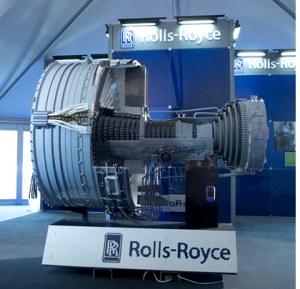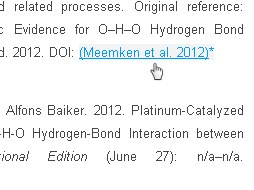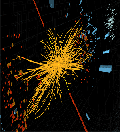 Back in 1993, the then UK Science Minister, William Waldegrave (remember him?) launched a competition for the best lay explanation of the Higgs boson and how it might theoretically endow other particles with mass. The prize-winning Higgs analogy came from Professor David Miller of University College London and used the movements of a scientist in a room to explain how particles get mass.
Back in 1993, the then UK Science Minister, William Waldegrave (remember him?) launched a competition for the best lay explanation of the Higgs boson and how it might theoretically endow other particles with mass. The prize-winning Higgs analogy came from Professor David Miller of University College London and used the movements of a scientist in a room to explain how particles get mass.
I’ve taken huge liberties with Miller’s concept to bring it up to date for this week’s Higgs boson news from the LHC at CERN:
Picture the scene: Geordie boy Prof Peter Higgs steps out of the lecture theatre into the refreshments area, hoping to get to the coffee and those delicious chocolate cookies. Unfortunately, he is besieged by a throng of clamouring scientists, hacks and hangers-on. He keeps his eye on the biscuit tray but nods and chats to his peers as he proceeds slowly, attracting a bigger and bigger crowd, signing autographs, fielding questions as he goes. The “field” of hangers-on – the Higgs bosons – slows Prof Higgs in his quest to move from lecture theatre door to the refreshments it’s as if he is now so massive he can barely move, there are so many Higgs bosons surrounding the Prof.
Then, from the door comes CERN’s Professor Incandela, he’s famous, of course, well-respected, but not quite the heavyweight as the eminent Professor Higgs. Nevertheless, he attracts some hangers-on and interacts with the field too, but he has not gained so much mass and is eyeing up the rapidly dwindliny supply of chocolate cookies worriedly but moving steadily towards it.
Meanwhile, fast as light a lowly post-doc emerges from the lecture theatre having been released at the flick of a switch. Needless to say none of the bosons notice her despite her PhD and electromagnetic personality. There is no interaction with the field, it is as if she is the ultimate size-zero. With no mass to slow her she speeds through the field photonically heading straight for the last remaining chocolate cookie grabbing it in a flash, and it’s gone, photolysed into oblivion.
With apologies to the Profs and that lowly post-doc, who really took the biscuit!
You can read Prof Miller’s original prize-winning analogy from 1993 here.
 There’s a weird piece of Deceived Wisdom that emerged from so-called Neuro-Linguistic Programming (NLP) that suggested that one could somehow tell whether a person was lying by looking at their eye movements. Turns out, unsurprisingly, that it’s nonsense. All that guff about looking up to their right when you’re fabricating a tale and down to the left when they’re recalling a truth? It’s nonsense.
There’s a weird piece of Deceived Wisdom that emerged from so-called Neuro-Linguistic Programming (NLP) that suggested that one could somehow tell whether a person was lying by looking at their eye movements. Turns out, unsurprisingly, that it’s nonsense. All that guff about looking up to their right when you’re fabricating a tale and down to the left when they’re recalling a truth? It’s nonsense. Over on Facebook, a friend is currently bemoaning her iPhone and more specifically the NikePlus app that allows you to track your walking and running. I used to run, dodgy leg precludes that now, can barely run for a bus these days…I also used to swim (not great for electronic gadgets) and I did used to keep track of lengths I swam and the time it took me and the pace I set myself and all that stuff…
Over on Facebook, a friend is currently bemoaning her iPhone and more specifically the NikePlus app that allows you to track your walking and running. I used to run, dodgy leg precludes that now, can barely run for a bus these days…I also used to swim (not great for electronic gadgets) and I did used to keep track of lengths I swam and the time it took me and the pace I set myself and all that stuff… Rolls-Royce today unveiled the world’s first jet engine to be made entirely of Lego at the opening of Farnborough International Airshow. The engine, which is one of the most complex Lego structures ever built, is a half size replica of the Rolls-Royce Trent 1000 which powers the Boeing 787 Dreamliner aircraft.
Rolls-Royce today unveiled the world’s first jet engine to be made entirely of Lego at the opening of Farnborough International Airshow. The engine, which is one of the most complex Lego structures ever built, is a half size replica of the Rolls-Royce Trent 1000 which powers the Boeing 787 Dreamliner aircraft. I just discovered the KCite WordPress plugin from a team at my alma mater which lets you improve reference citations in your blog
I just discovered the KCite WordPress plugin from a team at my alma mater which lets you improve reference citations in your blog Back in 1993, the then UK Science Minister, William Waldegrave (remember him?) launched a competition for the best lay explanation of the Higgs boson and how it might theoretically endow other particles with mass. The prize-winning Higgs analogy came from Professor David Miller of University College London and used the movements of a scientist in a room to explain how particles get mass.
Back in 1993, the then UK Science Minister, William Waldegrave (remember him?) launched a competition for the best lay explanation of the Higgs boson and how it might theoretically endow other particles with mass. The prize-winning Higgs analogy came from Professor David Miller of University College London and used the movements of a scientist in a room to explain how particles get mass. The ATLAS and CMS experiments at CERN today presented their latest results in the search for the long-sought Higgs boson. Both experiments see strong indications for the presence of a new particle, which could be the Higgs boson, in the mass region around 126 gigaelectronvolts (GeV).
The ATLAS and CMS experiments at CERN today presented their latest results in the search for the long-sought Higgs boson. Both experiments see strong indications for the presence of a new particle, which could be the Higgs boson, in the mass region around 126 gigaelectronvolts (GeV).